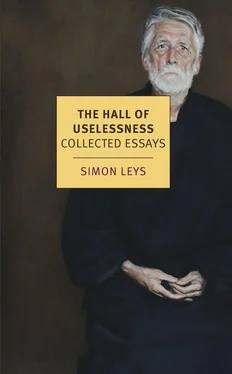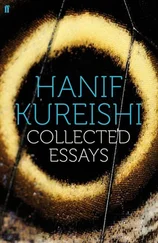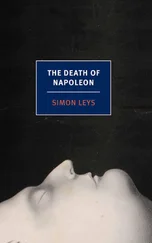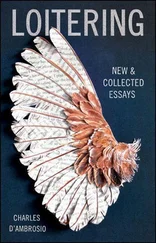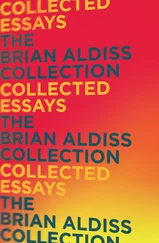As they are the products of our common human nature, it is quite normal that all the great civilisations should cultivate values that are basically similar, but they go about it in different ways and without necessarily attaching to them the same importance. What one may consider a basic axiom, regard as fundamental and embrace as a tenet may appear in the other only as a brilliant intuition, grasped by a few exceptional individuals.
This idea that the aesthetic quality of the work of art reflects the ethical quality of its author is so essential to Chinese thought that it sometimes runs the risk of becoming an oft-repeated cliché whose meaning can end up being distorted through mechanical and simplistic application. In the West, on the other hand, though not entirely unheard of, this same notion rarely undergoes methodical development. Thus Vasari, for example, can quite naturally point to a link between the spiritual beauty of Fra Angelico’s painting and the saintliness that characterised his monastic existence, but, by the same token, it would hardly occur to him to attribute the artistic shortcomings of other works to the moral failings of their authors.
China’s four major arts — poetry, calligraphy, painting (in ink, by means of a calligraphic brush) and music for qin (seven-stringed zither) — are practised not by professionals but by amateurs belonging to the scholarly class. Traditionally, these various disciplines could not be performed as a profession: an artist who would accept payment for his art would disqualify himself and see himself immediately reduced to the inferior condition of artisan. Although the poet, musician, calligrapher and painter (and quite often the same man is all of these at once) may let connoisseurs or a few chosen friends enjoy gratis the products of their art (sometimes, also, it is this limited but talented public that fires their inspiration), the fact remains that the prime aim of their activity is the cultivation and development of their own inner life. One writes, one paints, one plays the zither in order to perfect one’s character, to attain moral fulfilment by ensuring that one’s individual humanity is in harmony with the rhythms of universal creation.
The Chinese aesthetic, which, in the field of literary, calligraphic, pictorial and musical theories has produced a wealth of philosophical, critical and technical literature, developed without making any reference to the concept of “beauty” ( mei ; the term meixue , “study of beauty,” is a modern one, especially coined to translate the Western notion of aesthetics). When this concept crops up it is often in a pejorative sense, since to strive for beauty is, for an artist, a vulgar temptation, a trap, a dishonest attempt at seduction. Aesthetic criteria are functional: does the work do what it does efficiently, does it nourish the vital energy of the artist, does it succeed in capturing the spirit that informs mountains and rivers, does it establish harmony between the metamorphoses of forms and the metamorphoses of the world?
But even as he is creating his work, it is always and essentially on himself that the artist is working. If one realises this, one can understand the meaning and raison d’être behind the numerous statements and precepts which, through the ages, constantly associate the artistic quality of the painting with the moral quality of the painter. One could give any number of examples: “If the man is of high moral quality, this will inevitably be reflected in the rhythm and spirit of his painting”; “the qualities and flaws of the painting reflect the moral superiority or mediocrity of the man”; “he who is of inferior moral worth would not be able to paint”; “those who learn painting put the development of their moral self above all else”; “the painting of those who have succeeded in building this moral self breathes with a deep and dazzling sense of rectitude, transcending all formal aspects. But if the painter lacks this quality, his paintings, charming as they may superficially appear, will give out a kind of unwholesome breath which will be obvious in the merest brushstroke. The work reflects the man: it is true in literature and it is just as true in painting.”
But some critics have gone even further and have tried to identify in the works of famous artists either the expression of particular virtues they have shown in their lives or a reflection of their moral failings. For instance, the eighteenth-century scholar-poet Zhang Geng wrote:
What a man writes presents a reflection of his heart, allowing one to perceive his vices and virtues. Painting, which comes from the same source as writing, also holds up a mirror to the heart. In the beginning, whenever I looked at the paintings of the Ancients, I still doubted the soundness of this opinion, but after studying the lives of the painters, I venture to say that it is correct. Indeed, if we look at the different artists of the Yuan period (that is to say a period of national humiliation, under the Mongol occupation) we see Ni Zan had broken all ties with the ordinary, everyday world, and his painting is also characterised by a severe austerity and a detached elegance stripped of all ornamentation. Zhao Mengfu, on the other hand, could not resist temptation (he collaborated with the invaders) and his calligraphy, like his painting, is tainted with prettiness and a vulgar desire to please…
This last passage, contrasting two emblematic figures — Ni Zan and Zhao Mengfu — opens a dangerous trend in criticism: the deep meaning of an ethical reading of the work of art is lost only to be replaced by a sort of narrow and dogmatic “political correctness.” There is no doubt that the art of Ni Zan is sublime — a limpid and distant vision of pale, empty landscapes, cleansed of all worldly blemishes — but very little is known about the historical person Ni Zan himself, and the anecdotes attesting to his purity and his detachment could well be no more, on the whole, than an imaginary projection of the virtues suggested by his paintings. The case of Zhao Mengfu is even more curious: an aristocrat who agreed to put himself at the service of the Mongol invaders, he was traditionally regarded by posterity as a vile traitor, but the problem is that, in his painting and especially in his calligraphy, he also proves himself a prodigiously talented artist. In order to resolve this embarrassing contradiction, it is conventional for critics generally to choose to condemn, despite the evidence before their eyes, the “vulgarity” of his overly splendid calligraphy (a judgement that tends to bring to mind the famous condemnation pronounced by the Surrealists against Paul Claudel: “One cannot be French ambassador and poet”—as if Claudel hadn’t been both one and the other!).
But even such naïve and simplistic rantings have failed to affect the deep understanding the great Chinese artists have always retained regarding this ethical dimension of their work. And the calligraphers, in particular, are all the more conscious of it, since the practice of their art constitutes for them a daily asceticism, a genuine hygiene of their whole physical, psychic and moral being, whose efficacy they themselves can measure in an immediate and concrete fashion. Moreover, in this sense calligraphy is not just the product of their character — their character itself becomes a product of their calligraphy. This reversal of the “graphological causality” has been noted by Jean-Francois Billeter in his Art chinois de l’écriture , and he has supported his observation with aptly chosen quotations. The supreme beauty of a piece of calligraphy indeed does not depend on beauty. It results from its natural appropriateness to the “truth” that the calligrapher nurtures within himself — authenticity, original purity, absolute naturalness (what the Germans call Echtheit) : “In calligraphy, it is not pleasing that is difficult; what is difficult is not seeking to please. The desire to please makes the writing trite, its absence renders it ingenuous and true,” wrote the calligrapher Liu Xizai, quoted by Billeter, who further illustrates these words with a statement by Stendhal: “I believe that to be great in anything at all, you must be yourself.”
Читать дальше
